6 Key Differences Between A Normal Ford Ranger And The Raptor
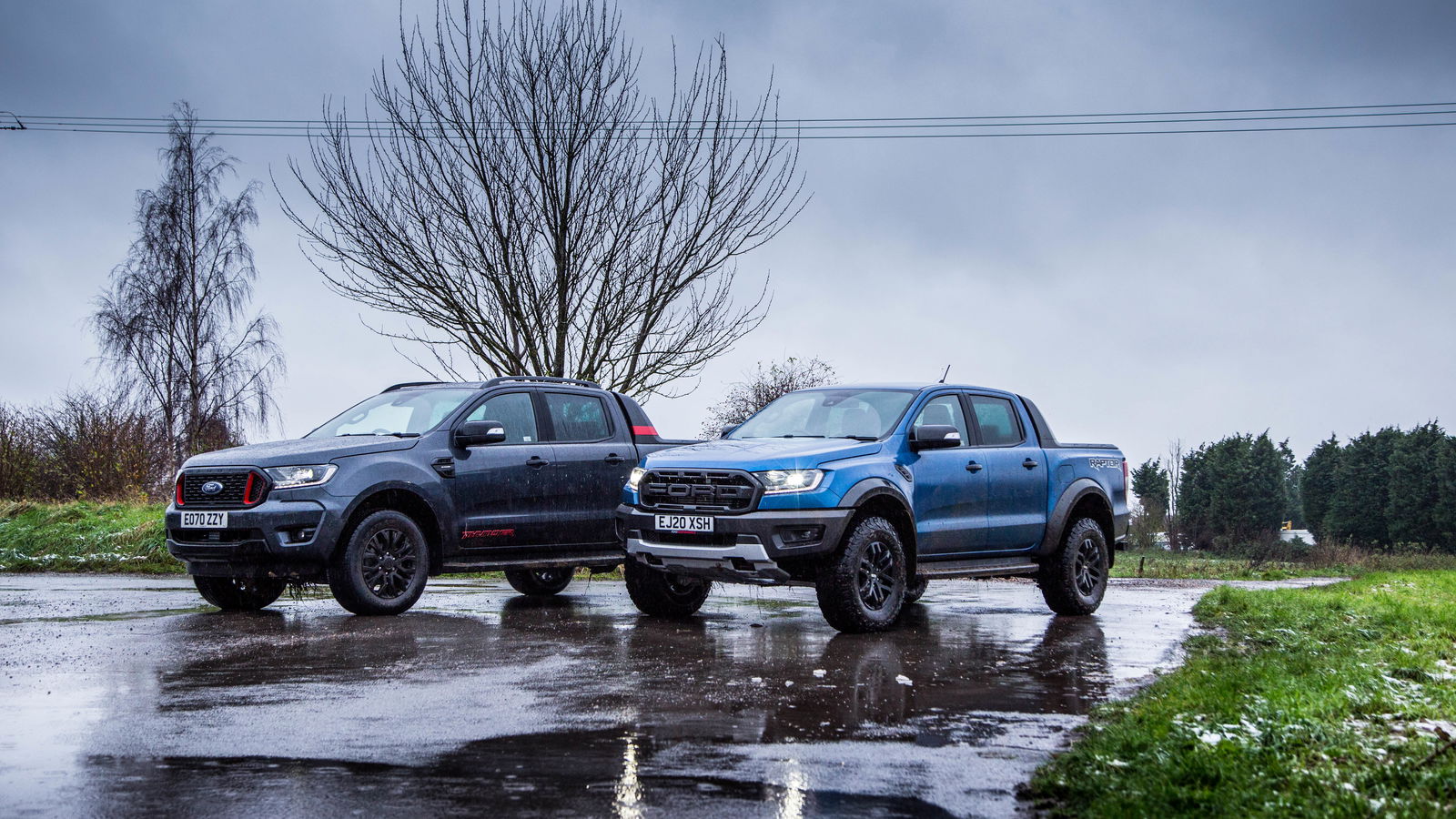
A few times now, I’ve had people question whether ‘our’ Ford Ranger Raptor constitutes little more than a trim job. That its hardy exterior is the equivalent of someone stuffing a sock down their Y-fronts.
In reality, though, Ford Performance went to town on its Ranger workhorse. Perhaps it even went a little too far - it’s inspired by the beefed-up recce vehicles used for rally raid competitions, and as such, is capable of covering rough terrain you’ll struggle to find away from rural Nevada.
To take a closer look at the changes Ford has made and to see what difference it makes both on road and tackling muddier stuff, we compared a Raptor with a Ranger Thunder. Both cars share the same humdrum 201bhp twin-turbo diesel engine, taking out one big variable and letting us focus on all the butch off-road stuff.
Suspension
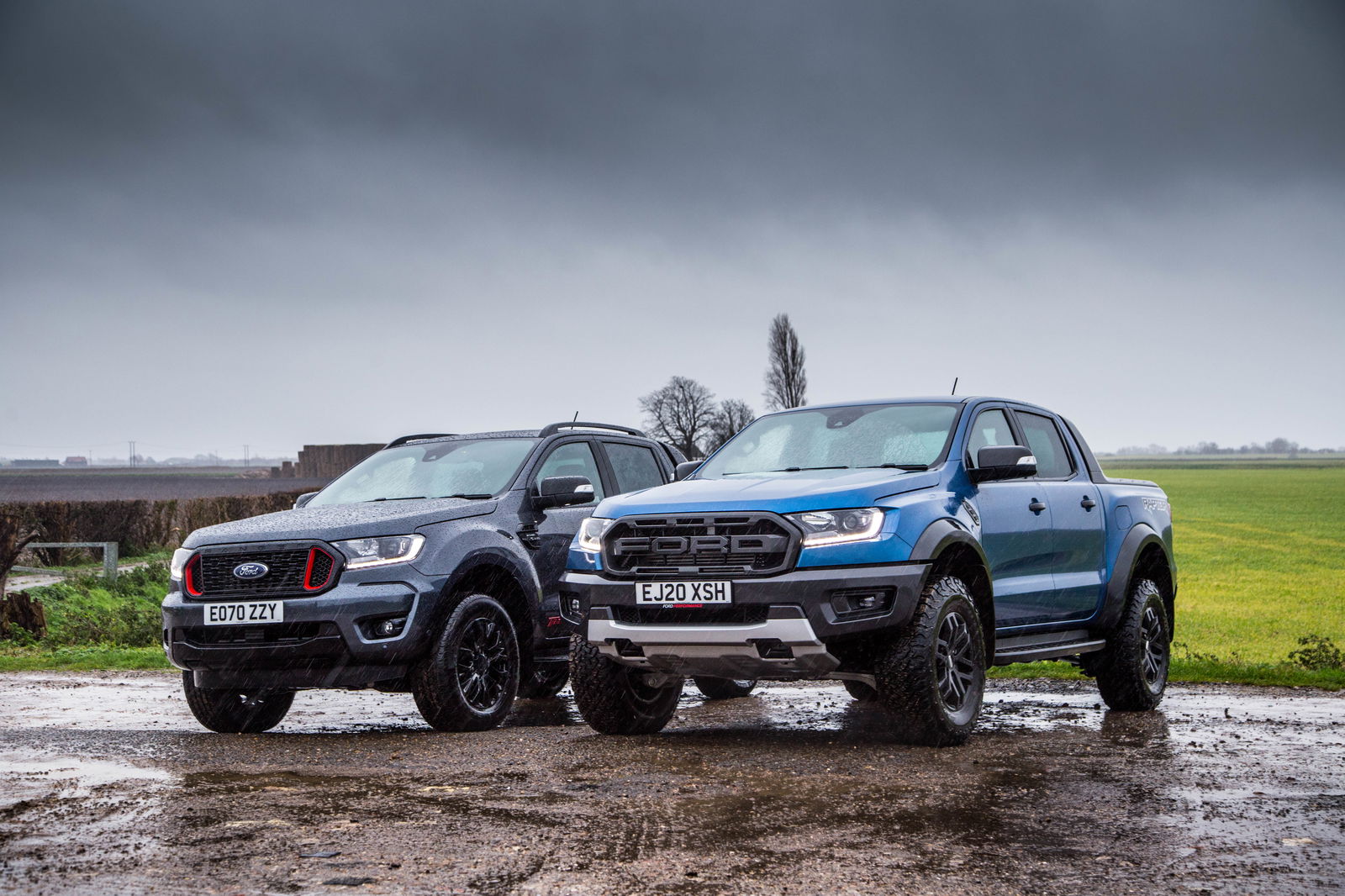
This is where Ford has done a big chunk of the work. The Raptor’s front and rear tracks are each a massive 150mm wider, and the vehicle sits 51mm taller. 63mm-diameter Fox Racing dampers increase front travel by 32 per cent and rear travel by 18 per cent.
The dampers are position sensitive, meaning they’re relatively soft during the initial travel, firming up towards the far end of the compression stroke. This makes for a reasonable degree of comfort when you’re driving around normally, but plenty of control when the going gets rough. The setup also means you’re less likely to bottom out. Fox’s defence arm describes position sensitive damping as “particularly well suited to military vehicle operations on the modern battlefield,” which is nice to know when you’re bimbling along a British green lane in Cambridgeshire.
The Raptor also gets new aluminium control arms and an entirely bespoke rear suspension setup. Like a lot of pick-ups, the Thunder has an old-school leaf-sprung, live axle rear suspension layout, but the Raptor gets a coil-sprung arrangement with a Watt’s Linkage which makes for near-straight suspension travel.
A standard Ranger like the Thunder has approach, breakover and departure angles of 28.7, 21.5 and 25.4 respectively. A Raptor manages 32.5 for approach and 24 for both the breakover and departure angles. Respectable, but a little way off something like a Jeep Wrangler Rubicon. The Raptor’s true trump card is how hard you can traverse hardy terrain.
Frame
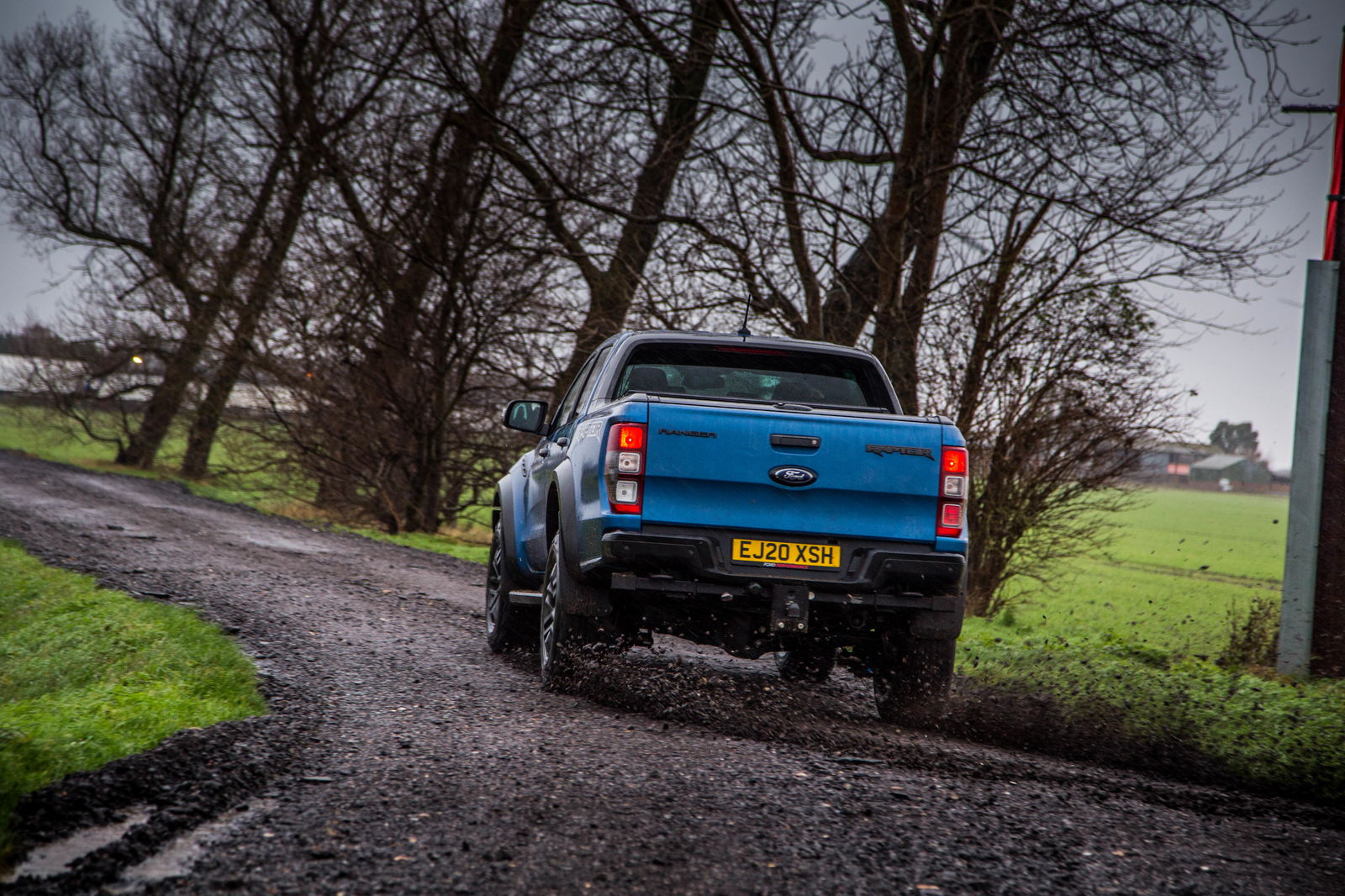
It isn’t just the suspension that helps you do this - the Raptor’s frame is considerably stronger. It’s been reinforced using low-alloy steels, making sure it’ll take an extra 1G of impact without bending.
Bodywork
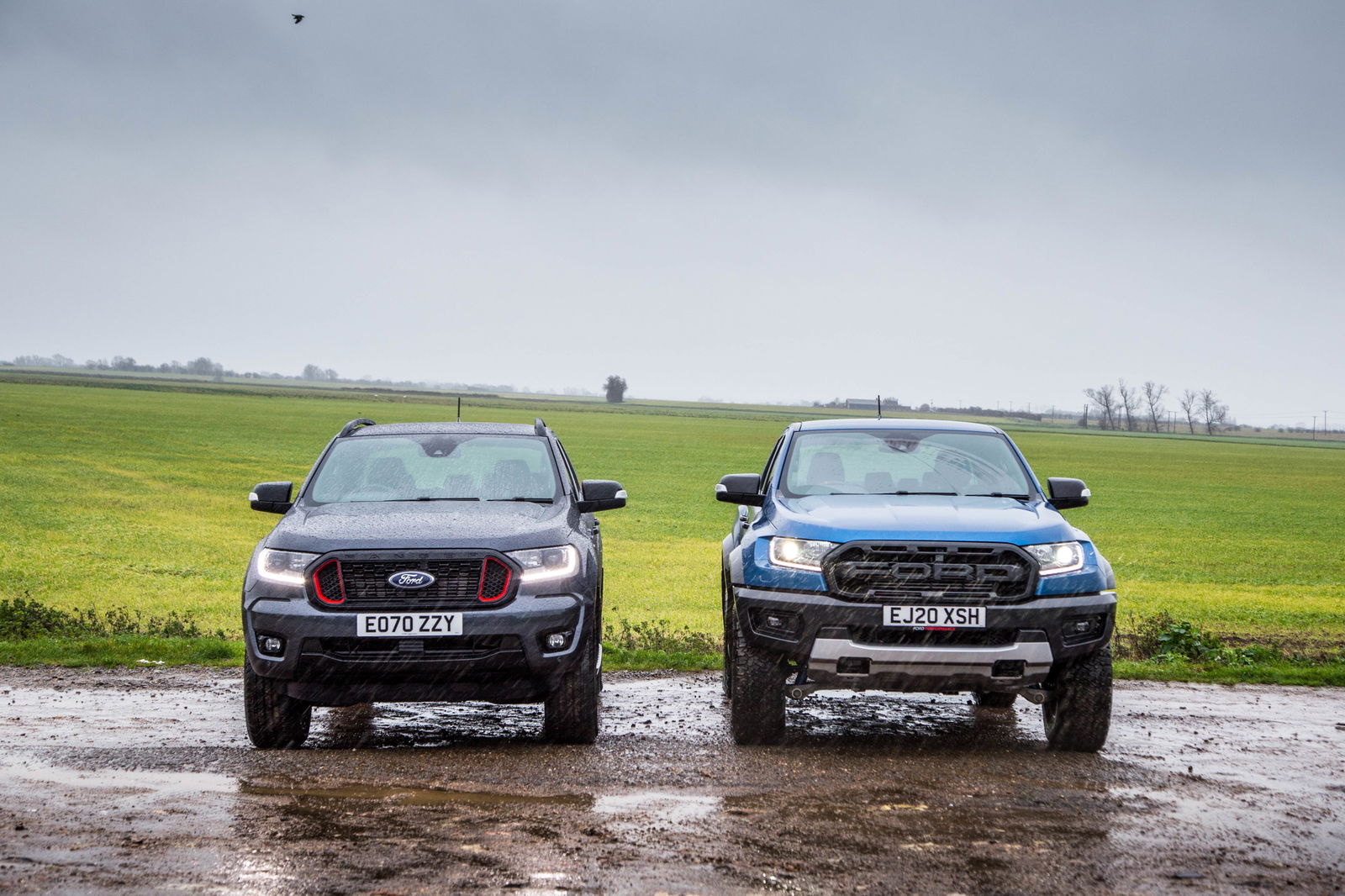
Wider tracks and more travel means new bodywork is necessary, so the Raptor gets bespoke front and rear wings with blistered arches and tough plastic cladding. Parked up next to the Thunder, the Raptor looks considerably more muscular, helped by its unique grille with suitably giant ‘FORD’ lettering, just in case you forget who makes this thing.
The metal running boards are considerably larger than the ones found on the Thunder, so the rear bodywork doesn’t get peppered with stones. They have drain points for sand, mud and snow, too.
Finally, there’s a new bash plate other Rangers don’t get. The 2.3mm-thick, high-strength steel part is 60 per cent girthier than the standard, protecting the sump whenever that additional ground clearance isn’t sufficient.
Electronics
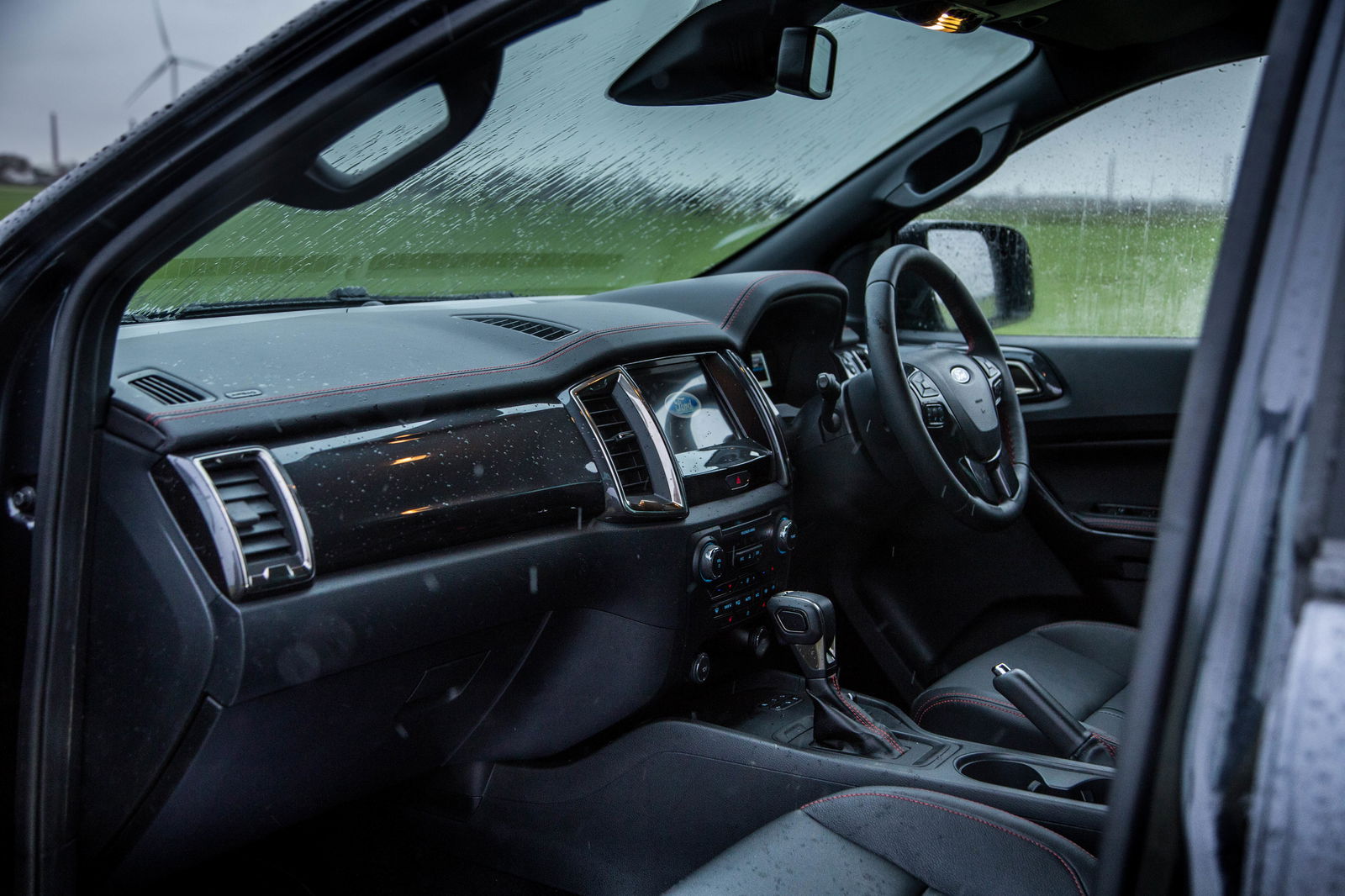
The Thunder may have hill descent control and switchable rear and high/low-range four-wheel drive modes, but beyond that, there’s nothing to fiddle with. The Raptor, on the other hand, has you covered for all scenarios.
There’s a ‘Normal’ mode for day-to-day driving, and a livelier Sport mode for those twisty country roads, which the Raptor is better at than you might expect. Once you’re away from the tarmac, there’s the choice of Grass/Gravel/Snow, Mud/Sand, Rock and Baja modes.
The latter dials down the stability control, fiddles with the throttle map and makes the steering’s power assistance firmer. Named after the Baja 1000, you can use it in either high-range four-wheel drive, or for maximum LOLs, two-wheel drive.
Wheels, tyres and brakes
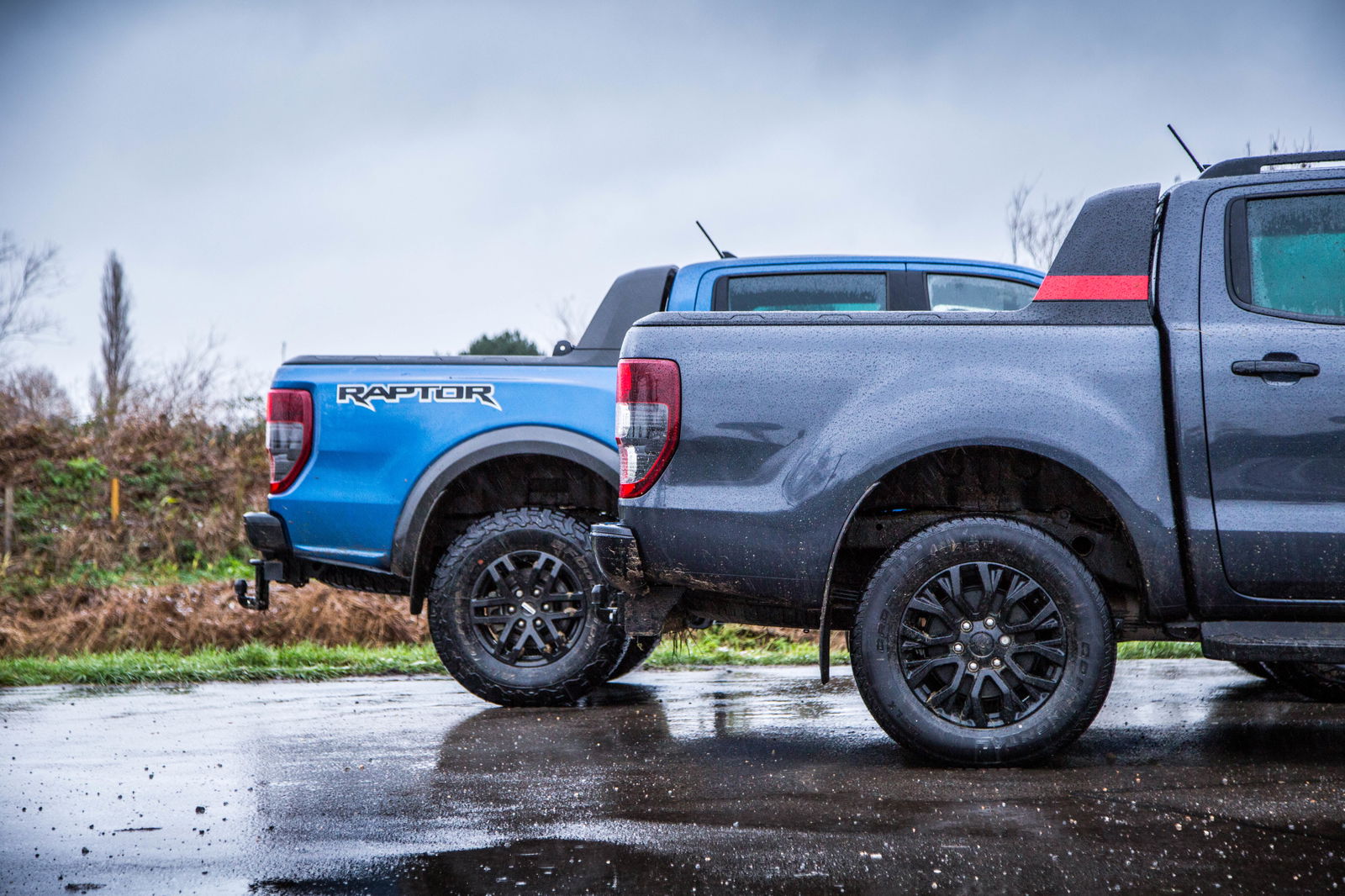
Ford has given the Thunder a set of unique 18-inch alloy wheels. On our test car, these were wrapped with Continental ContiCrossContact XL tyres. These are road-biased summer boots, although Continental does claim they give “outstanding traction in light off-road use”.
The Raptor’s wheels are an inch smaller, primarily because they’re wrapped in huge BF Goodrich A/T tyres measuring a whopping 33-inches in diameter. These are all-terrain tyres with a blocky profile that’ll rarely leave you wanting for grip and traction, whether you’re belting over rocks or ploughing through mud.
While we’re having a poke around down there, the Raptor also has 20 per cent bigger pistons for the twin-pot front calipers, squeezing 332mm discs. The rotors are a tad narrower at the rear, but the same diameter.
Driving experience
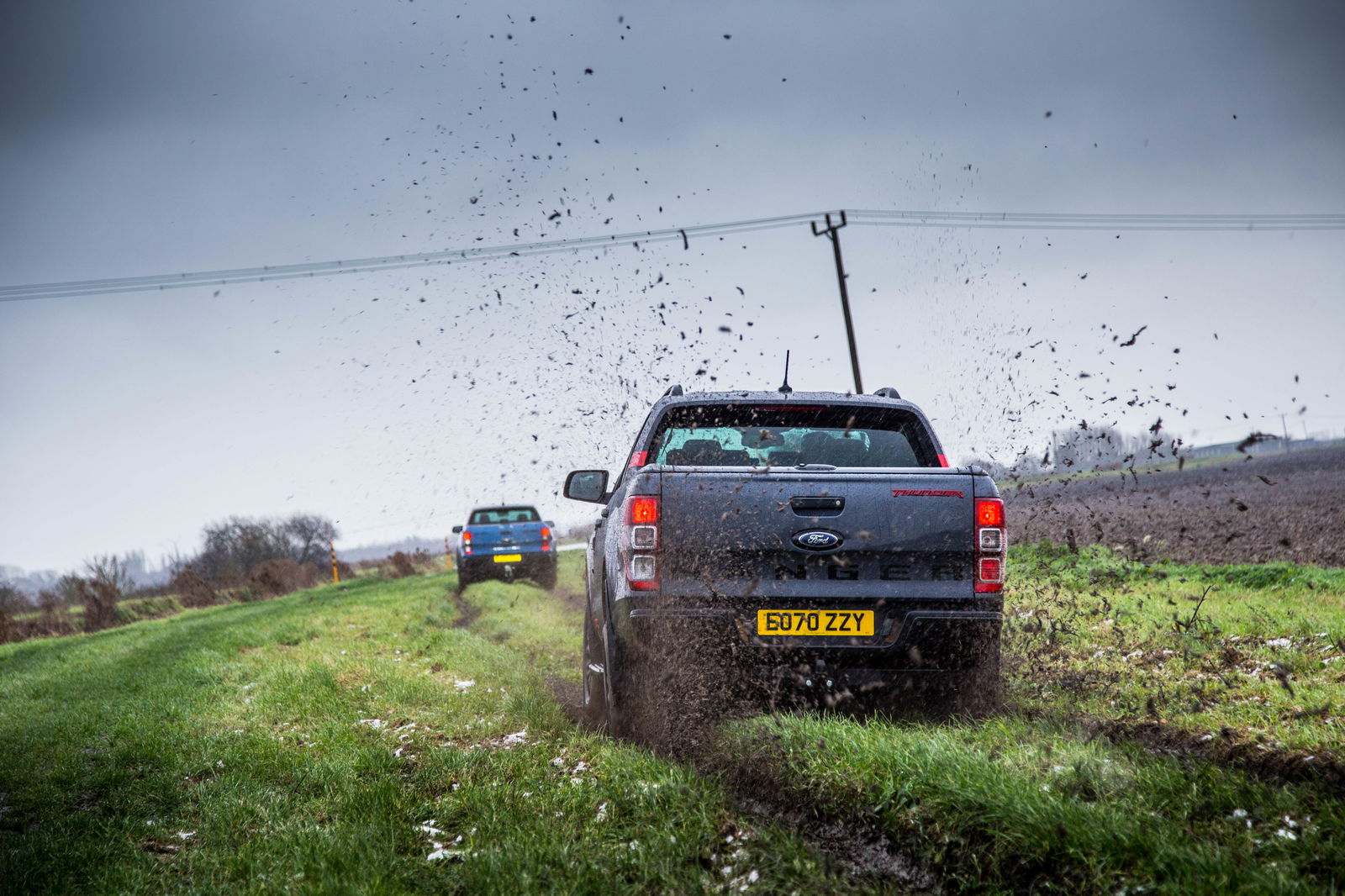
On the road, both of these cars feel very similar - the Raptor is no less comfortable or refined, despite all that extra sturdiness it has going on. The blocky BF Goodrich tyres struggle more on wet tarmac than the Thunder’s Contis, though.
These tyres are also very draggy. Along with the extra height and the Raptor’s weight gain (around 250kg), the tyres contribute to a 4-5mpg reduction in fuel economy on long-distance drives. The Thunder is also noticeably more sprightly, as reflected in the performance figures. Cracking 0-62mph in a respectable nine seconds, it’s over a second quicker to the benchmark figure.
On less solid surfaces, the differences between the two broaden. Even though the reasonably rutted green lane part of our test route wasn’t hugely taxing for the Raptor, it’s telling just how easy the beefier Ranger made it feel.
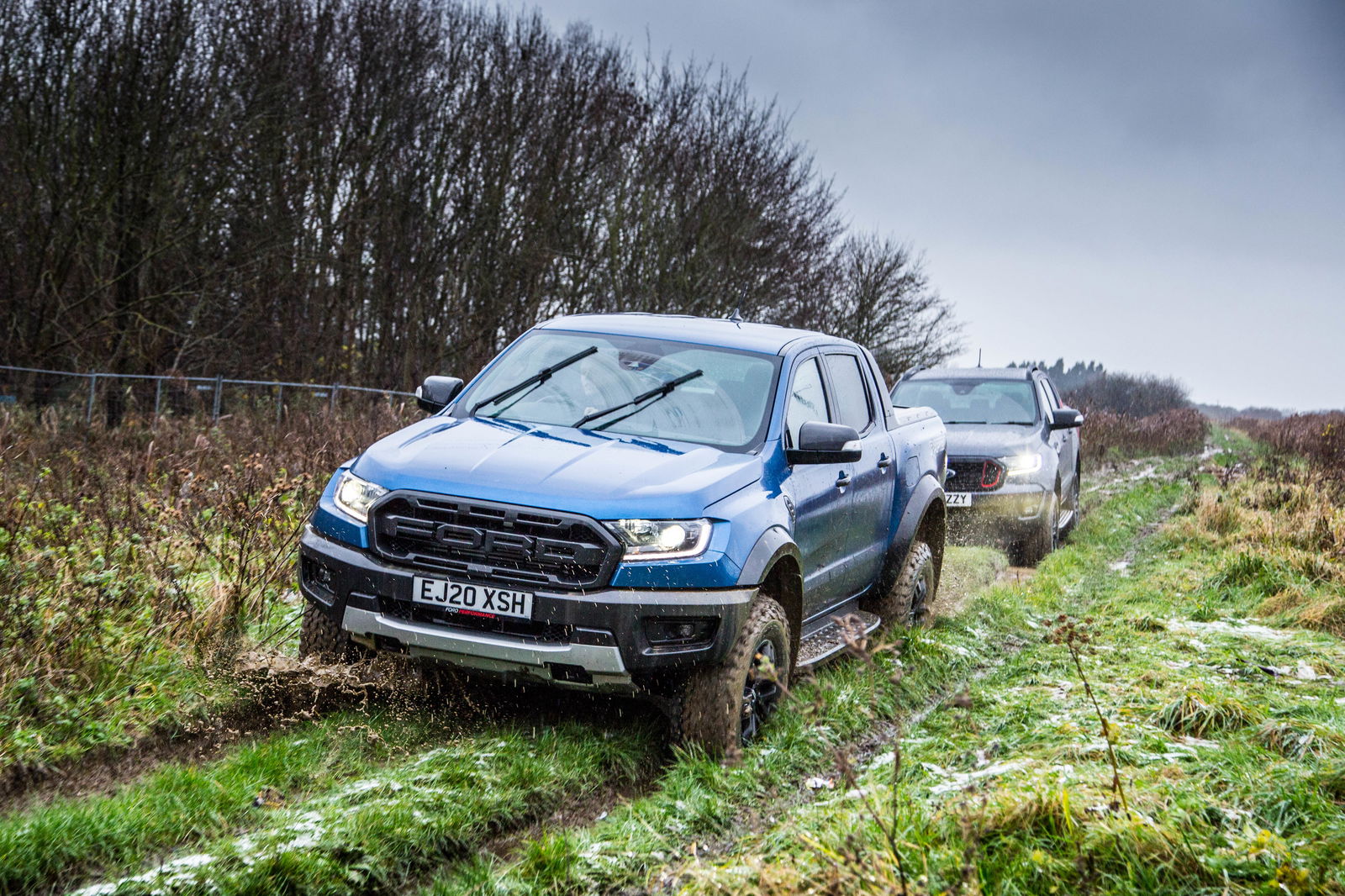
The Thunder covered the same ground as the Ranger with its road-biased tyres rarely struggling for grip or traction. It performed admirably, but it bottomed out more frequently and bounced the driver around more. On the whole, it requires more care, whereas, with the Raptor, you can charge at things without a care in the world. Plus, it can tackle some surprisingly slippy terrain while still in two-wheel drive mode.
With a Ranger Thunder weighing in at £39,558, Ford is expecting you to pay an additional £10,000 or so for the Raptor’s extra ability. Having taken a Raptor on some gnarlier stuff a while back, that premium doesn’t seem like such a bad deal, although it’s worth pointing out commercial customers can knock 20 per cent VAT off the Thunder.
Even if you’re not getting that discount, the Thunder makes far more sense. It’s a better car for 99 per cent of the time and isn’t compromised by the kind of off-road ability you’ll struggle to find anywhere to truly exploit. The abject silliness of the Raptor appeals strongly, though, so I can perfectly understand why anyone would want to ignore the sensible choice of the Thunder (or any other Ranger) and go for it.
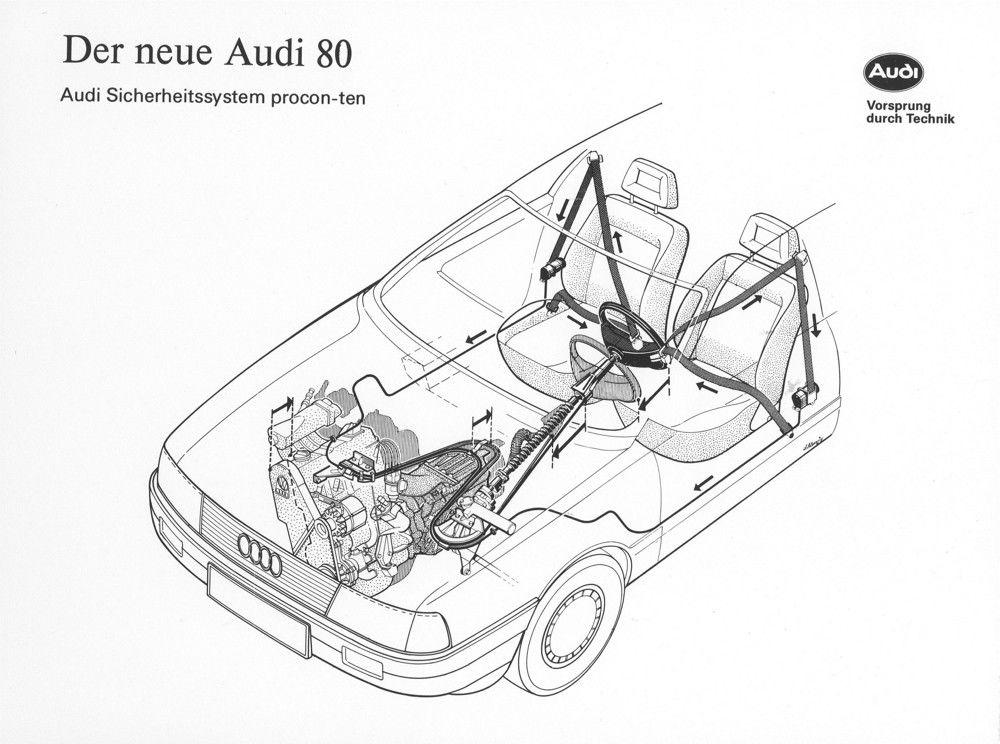
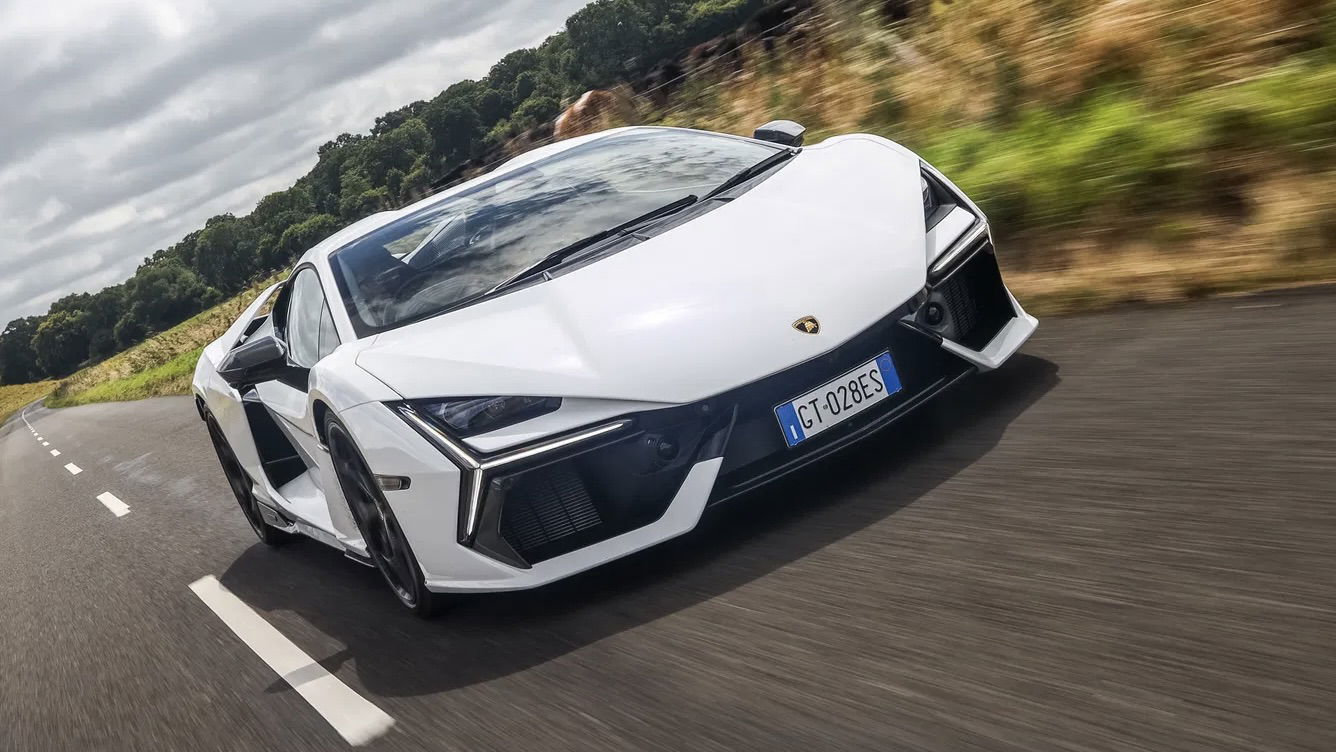

Comments